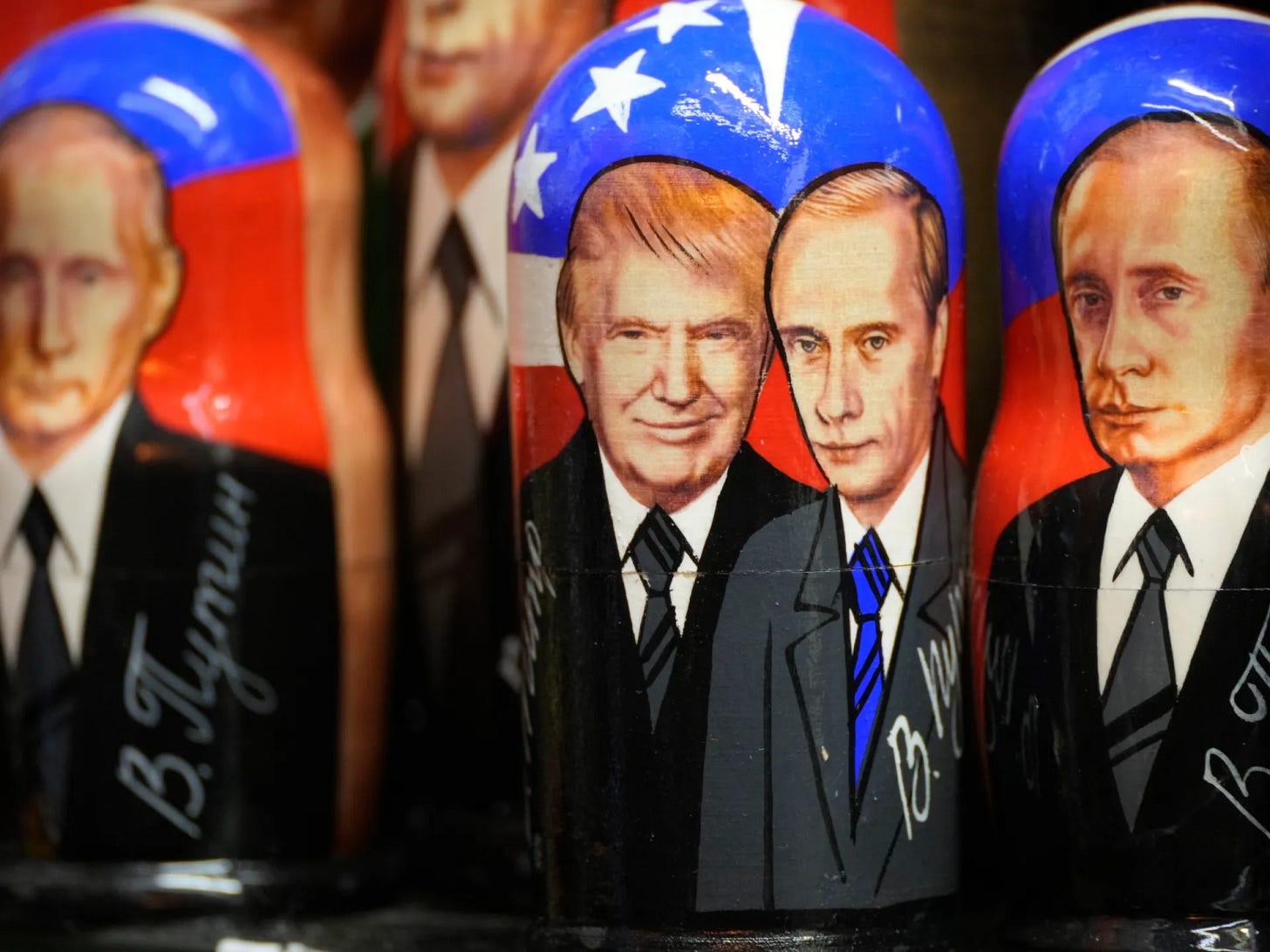Trump on Russia: Bluster, Bluff, and Strategic Blunders
How Trump's Empty Threats and Contradictions Undermine U.S. Credibility in the Russia-Ukraine Conflict
Donald Trump’s rhetoric on the Russia-Ukraine war continues to attract scrutiny, with reactions from Moscow, analysts, and American media shedding light on how his ultimatum-style approach is perceived. By factoring in additional insights, including the Wall Street Journal's analysis of Russia's dismissal of Trump’s threats as a ruse, a more nuanced critique of Trump’s strategy emerges, one that highlights its complexity, contradictions, and risks.
A Rhetoric of Provocation: Effectiveness or Empty Posturing?
Trump’s ultimatum-style rhetoric, which seeks to position him as a hardliner on Russia, reflects his inclination to create high-stakes scenarios. According to the Wall Street Journal, Moscow views these threats as little more than political theater. Dmitry Peskov, Kremlin spokesperson, and other Russian officials see Trump’s words as predictable and unserious, designed to bolster his domestic standing rather than influence Russian policy. This perception undermines Trump’s leverage and highlights a fundamental flaw in his approach: the assumption that rhetorical brinkmanship alone can produce tangible results in complex geopolitical conflicts.
Moscow’s perspective, as illustrated in the WSJ, reflects a deep-seated desire for a new global order, a “Yalta 2.0”, where Eastern Europe is divided into spheres of influence. Trump’s overtly aggressive tone, far from fostering a pathway to negotiation, feeds into Putin’s narrative that the West is hostile and uncompromising. For Putin, any settlement must occur on terms favorable to Russia, and Trump’s rhetoric, rather than opening doors to diplomacy, reinforces the Kremlin’s belief that the U.S. remains fundamentally adversarial.
The “Ruse” and Domestic Politics
One of the most compelling aspects of Trump’s rhetoric is its dual audience: international adversaries and domestic constituents. As the WSJ notes, Trump’s threats may not be serious efforts to engage Moscow but rather calculated moves to appease his political base. By presenting himself as tough on Russia, Trump seeks to neutralize criticism from his opponents, who often characterize him as soft on Putin. This dual-purpose rhetoric allows Trump to strengthen his domestic image while deflecting from the complex realities of the Russia-Ukraine war.
However, this tactic risks backfiring. Political analysts cited by the WSJ emphasize that Trump’s abrasive communication style alienates Russian officials, who prefer direct and respectful engagement. Oleg Ignatov notes that Russia values personal and measured communication, and Trump’s public ultimatums may irritate the Kremlin, reducing the likelihood of meaningful dialogue. In this sense, Trump’s rhetorical strategy appears to prioritize short-term political gains over long-term diplomatic success.
Trump’s Calculated Risks and Strategic Weaknesses
Trump’s rhetoric on sanctions and oil prices, coupled with his claims of acting from a “position of strength,” aligns with his broader approach to international relations: using economic tools as leverage. While this resonates with his base, it also exposes critical vulnerabilities. As the WSJ notes, Russia’s confidence in its resource base and manpower challenges the efficacy of Trump’s economic pressure. Moreover, Russia’s focus on securing a global settlement further complicates Trump’s ability to unilaterally dictate terms.
The broader geopolitical landscape also works against Trump’s rhetoric. European allies are increasingly wary of bearing the financial and military burdens of the conflict, and Moscow’s dismissive tone signals that it is prepared for a protracted confrontation. Trump’s ultimatum, therefore, risks creating a perception of American overreach, particularly if his threats fail to produce measurable results. This undermines U.S. credibility, making it harder to rally international coalitions against Russia.
Contradictions in Trump’s Strategy
Trump’s rhetoric also reveals contradictions in his broader strategic vision. His threats of sanctions and promises to lower oil prices conflict with the economic realities of U.S. shale production, which relies on relatively high oil prices to remain profitable. This disconnect between rhetoric and economic feasibility undermines his position and risks exposing the U.S. economy to unintended consequences. Furthermore, Trump’s insistence on Europe shouldering the financial burden of the war reflects a transactional approach to alliances that may strain transatlantic relations.
Conclusion
Trump’s rhetoric on the Russia-Ukraine war is a calculated gamble, combining political theater with strategic posturing. While it may resonate with his domestic audience, it risks alienating international stakeholders and deepening global tensions. Moscow’s dismissal of his threats as a ruse underscores the limits of his approach, highlighting the need for a more nuanced and collaborative strategy. By prioritizing optics over substance, Trump risks undermining both his own credibility and America’s standing in the global arena. Ultimately, his rhetoric, though bold, raises more questions than it answers about its long-term efficacy in resolving the conflict.



